Click through the photo gallery for a look at some of the many DJs who graced Footwork’s booth.
Article originally published February 11, 2014 by The Grid online (thegridto.com).
In the face of King West’s rampant condo-ization and nightclub-ificaiton, this beloved, recently shuttered basement venue held it down for underground sounds—and continues to do so at a newly opened space in the Annex.
BY: DENISE BENSON
Club: Footwork, 425 Adelaide W.
Years in operation: 2005-2013
History: The story of one of this city’s most beloved, internationally recognized house and techno clubs begins with the unlikely pairing of two men raised on rock.
Hamilton native Joel Smye was a long-haired fan of bands like Pearl Jam and Rage Against the Machine until his parents sent him to Switzerland to complete high school. While there, he also got an education in rave. By 1997, he hit up massive Toronto parties each weekend, and taught himself to DJ. As Baby Joel, he would become known for his love of funky Chicago house.
Originally from Ottawa, Stephan Philion moved to Toronto 11 years ago, already experienced in the hospitality industry, and in throwing house parties, which were largely a means to accumulate sound and lighting gear. He had a lean toward Britpop and grunge until party promoter and friend Gairy Brown took Philion to Fly Nightclub, where he fell for dance music.
Smye and Philion met in the early 2000s, while waiters at Brassai. The two talked music. Philion got to hear Smye DJ, loved his take on house, and invited the DJ to check a club sound system that was just gathering dust at the time.
“I expected a couple of JBLs beside a TV or something like that,” admits Smye. “But, basically, the bass bins that would later be in Footwork were laid out flat across Steph’s bedroom floor. He had to crawl over them to get to his bed.
“We decided we should do something with them, so talked about doing a one-off at 99 Sudbury.”
At the time, 99 was still operating as a film studio, with occasional late-night parties. Philion and Smye had success with theirs, and came to manage the studio’s bar on weekends from 2003 to 2005.
Smye DJed a lot, and the pair booked in underground house and techno DJs and promoters like Mike Gleeson, Mat Lunnen, Lee Osborne, and Fukhouse. They lost the space when 99 Sudbury landed a year-long film contract.
As luck would have it, two regulars at Brassai frequently asked the duo about their parties.
“I think it was the same week that we were out of 99 that they said, ‘You know, we have this space that’s right around the corner. We just changed the locks, everything is up to code, and the liquor permit is in place—you’d just have to come and make it your own,’” recalls Smye.
Previously, the basement at Adelaide and Brant had housed piano bar Cry Baby, and dance club The Matrix before that. Initially, it didn’t feel like the right space for Smye and Philion, especially with its many windows that looked onto Adelaide.
“Then we came up with the idea of flipping it around, and having the entrance be from the alley, while boarding up the windows to make that half the dancefloor area,” Smye recounts.
After a month-and-a-half and “a curbed rent so we could have the opportunity to start out as cheaply as possible,” the two opened Footwork Dancebar in May of 2005.
They launched in a rapidly changing area. Soulful-underground-house club Roxy Blu, located across the street on Brant, would close that July, replaced by an upscale restaurant. Trendy spots like Brant House and Century Room were new to the neighbourhood.
Footwork was different. Not only was it located in a nondescript office building, the entrance was down an unmarked alley on its south side. Equally disorienting on first visit was the short maze of a hallway you stepped into. Often jammed with people both entering the club and exiting to smoke, the hallway was soundproofed and painted black. Senses kicked into overdrive upon entering the pulsing main space. There was a lounge area and some seating, but Footwork was about two main things: music and dancing.
Why it was important: “We were pretty green at the time, and didn’t really know what we were getting into,” Smye confesses. “Our initial concept wasn’t really to be a full-on nightclub; we had some club nights that we wanted to do, but our goal was modeled on something a little more like Element—a dance bar.”
Still, they worked to bring warehouse sounds and DJs to a licensed club, with mixed results.
“We had a bit of cockiness to us, I think, when we opened because we had done 99 Sudbury for a couple of years, and it was successful,” says Smye. “When we were there, it was really easy to get people to come out, for obvious reasons.
“We thought that would translate easily to a bar and club. What we found was that our crowd came at two in the morning, looking for something to drink. We had to explain that it was a legit operation. People were a bit confused for a while.”
Though the Activate crew had some success promoting Wednesdays, and occasional Thursdays were busy, Footwork soon opened on weekends only. While legal capacity was only 255 people, they rarely reached that.
“The first year was rocky,” shares Smye. “It was off-and-on, which left us scratching our heads a little.
“We really got our stride going when DJ Addy brought us a Friday weekly a bit before the start of year two. Addy brought with him a crowd, a sound and a group of DJs who we hadn’t really worked with before.”
DJing professionally since the late ’90s, Addy Ranh had held residencies at clubs including The Guvernment, System Soundbar, Film Lounge, Turbo, Tonic, and Mad Bar. He knew Joel from Hamilton clubs, and fell for Footwork on first visit.
“I loved its high ceiling, alleyway entrance, and great owners who truly understand the culture,” says Ranh, who’d proposed Domestic Fridays, with a focus on local talent.
Main residents included Addy, Deko-ze, Carlo Lio, The Junkies (then called Vinyl Junkies), Sydney Blu, Nathan Barato, and Joee Cons. Domestic was busy from the start.
“The launch was slammed, with 400 people inside, and 300 trying to get in,” says Ranh. “Traffic backed up on Brant Street. Security was overwhelmed. Chuck Liddell was there.”
Perhaps the former UFC champ was lured by Domestic’s tough sound.
“Fridays’ sound was clubbier,” Smye says. “Its DJs played at places like The Guvernment and Comfort Zone, and had more of that pumping, hard-house vibe, which is also kind of a Toronto sound.
“I give Addy a lot of credit for helping us to get cooking, and to find a good balance because Domestic Fridays allowed us to focus energy on developing our Saturday sound.”
“Footwork came around at the right time—when [so many] clubs were switching to mainstream hip-hop and Top 40,” credits Ranh, in turn. “We went from having seven house clubs to literally two, Guvernment and Footwork. Footwork kept the torch alive, and fed the culture.”
To do so, Smye and Philion worked with a variety of promoters on Saturday nights. Each brought their own sonic specialty, like Fukhouse for techno, Vunk for progressive house, and Nine for funky Chicago house. After Nine folded, its main resident DJ Mike Gleeson launched Bounce with Justin Riva.
“The Bounce crew became, and still are, our go-to guys for Chicago house, and related stuff,” Smye says. “When Fukhouse disbanded, Platform took over that techno role.”
“Footwork really was one of the only places you could reliably go to hear great underground music, especially in its earlier days,” confirms Gleeson, who’d DJed in Hamilton before going on to do Hustlin’ parties with Mat Lunnen at venues including Boa Redux and 99 Sudbury. “That made Footwork a hub for underground electronic music, and also provided a much-needed base from which the scene could survive and grow. The musical diversity attracted all kinds of different people; you can’t have a strong scene without it.”
Like Gleeson, Michael Babb a.k.a. DJ/producer Deko-ze was one of the earliest DJs to play at Footwork, and was impressed.
“Excuse my crassness, but I got an erection when I first saw the DJ booth,” says the notoriously forthright Babb, a veteran of the country’s top clubs and raves.
“You could immediately tell it was a DJ, Joel, who had overseen its design. So many club owners don’t realize that us DJs can perform at our best when the booth is put together properly. It’s also refreshing and rare to find owners who want to promote good quality music rather than solely make money.”
As a result, the skilled and energetic Deko-ze would go on to spin his chunky sounds at Footwork throughout the club’s history, even hosting annual birthday and Christmas specials.
Philion and Smye, in fact, got a whole lot of things right at Footwork, including sound and lights. Lighting was simple, but effective while sound was rich and full. The system always sounded tuned.
“It was pretty much always the same system in there,” says Smye. “We added a couple of pieces over the years, but I think it was just that we had the right pieces and the right amount for the room. It was never about overkill; it was about having sound that was appropriate.”
The club’s size and floor plan also worked to its advantage on many fronts.
“Footwork had a strange layout, but a very positive and contagious floor energy,” describes Gleeson. “It was small enough to be intimate and, as a DJ, make a direct connection with the dancers, yet big enough to host amazing artists and events.”
“From a DJ’s perspective, something about that hourglass shape made it easier to connect with and control the crowd’s energy and vibe,” agrees Jonathan Rosa a.k.a. Jon Jon, a resident at Footwork since 2007 who’s also been involved in the club’s marketing and promotions since 2009. “Even the international touring DJs, like Guy Gerber and Marco Carola, emphasized this.”
Footwork also gained a reputation for its audience.
“Footwork crowds knew their music,” explains Philion. “More than once, big DJs would tell us that they were nervous to play. A lot of that had to do with the proximity of the people, but also the feel in the room, the vibe, and the knowledge of their fans.”
Put simply, it felt good to be in a room where you could trust that most people there also wanted to get lost in the music.
“Footwork was a music-focussed venue, from the programming to the people who came there to dance,” says Smye. “This created a vibe that was different from a lot of other clubs.
“The magic of dance music, I’ve always felt, is that point in the night where there’s all sorts of people mixed into the room and, ultimately, they all really click together. Given the size of Footwork, that seemed to happen pretty regularly.”
“It’s no secret that we have had a long list of great nightclubs here in Toronto, and I’ve pretty much been to and worked at them all at one point or another,” offers in-demand DJ/producer Carlo Lio. “But Footwork was all about the music from day one, and I feel people really noticed this. It was a place where everything just felt right, and that is never easy to find. Footwork really became a home for all of us, whether you were a partygoer, DJ or promoter.”
Footwork’s Domestic weekly was the globetrotting house and tech talent’s “first real residency in the city.” Even as his popularity soared, Lio continued to guest at the re-branded Fridays (Rehab and then Luv This City), open on some Saturdays, and produced parties including UNION, a hugely popular collaborative gig also featuring Footwork favourites Nathan Barato and The Junkies.
“Footwork played a key role in my career,” Lio emphasizes. “It has moulded me to become the artist I am today. It’s given me the chance to play with some of the biggest DJs on the planet, and has taught me tonnes about the industry as a whole. The Footwork crowd itself was like a drug; playing for the right people who love the music just as much as you do is indescribable. It can never get old!”
Footwork’s commitment to Toronto electronic music talent has been key to the careers of many who now tour the world.
In addition to Lio, Barato, The Junkies, and Sydney Blu, people like Jamie Kidd, James Teej, My Favorite Robot, and Art Department come to mind.
“It was more by circumstance than design, but Footwork did become a breeding ground for a lot of talents who have seen success around the world,” allows Smye. “Take the No.19 crew, Nitin and Jonny White [also half of Art Department]. We kind of grew up together. They brought in DJs and would also be on the bill, but had a tough time doing events at times because that sound they were into wasn’t really taking off. They were friends, and we wanted to do more with them, but from a club perspective, we didn’t always find that their parties made the room happen. I give them credit; they could have easily had more nights with us if they’d sometimes picked up the pace a little, but they stuck with their sound, and obviously have done well with it.”
Nitin now tours regularly, and is at work on his debut album. Addy is also known as a producer, having released music on labels including Toolroom, Hot Fingers, and Younan Music. Rosa and fellow Footwork resident DJ Jeff Button are among the many other Footwork-affiliated names that have begun to rise.
“The Footwork guys have gone out of their way to champion some of Toronto’s strong local talent,” confirms Babb a.k.a. Deko-ze. “They’ve been teaching the new generation that there doesn’t need to be an international DJ to bring credibility to a night.”
With its small size, and dedicated following, Footwork was also well-positioned to present emergent sounds and artists. Saturdays, in particular, reflected shifts in underground house and tech. An example is following the No.19 lead to slowed beats, as Footwork did when they teamed up with Jazz Spinder to present the Modern Love Affair series.
“There was this new sound coming up – deeper, with a slower tempo—and a lot of the artists weren’t yet well known or well-received in Toronto, even though it was getting really big elsewhere in the world,” says Smye.
“We created a brand so that the parties would be more about that brand, and people would just trust us that the DJs would be quality. Toronto has a knack for getting stuck on the same old stuff sometimes, so we wanted to give ourselves some freedom to bring in new acts, and take some chances.”
“Clubs these days get stuck with sounds or DJs, or only book what’s hot and drop what’s not,” adds Lio. “Footwork was the opposite; they evolved. Their ear was always to the ground; they moulded with the new underground music, supported rising talents, and were willing to give it all a shot. You can’t beat a mentality like that. This is one of those special clubs that DJs will take less of a fee to play at. It was, and is, an internationally renowned club.”
The club did gain a surprisingly large international rep given its relatively small size. Footwork even clocked in at number 36 in last year’s Top 100 Clubs list compiled by DJ Mag.
“That caught us off-guard, to be honest,” allows Smye. “I think what got a good buzz going around the world were the DJs coming in, and having such a great time playing there. If you ever stood in the Footwork DJ booth when the night was going off, it really was the best seat in the house. You had a great view, you were close to the crowd—it just had such an intimate feel, and a lot of the DJs we booked played at mega-clubs so they’d come to Footwork and it would bring them back, probably, to the feelings they had when the first got into playing.”
Who else played/worked there: Several hundred local and international DJs graced Footwork’s booth during the club’s eight-year-run. Everyone I speak with has favourite memories.
“Two standout DJs who played with us a lot in the early years, and have become good friends, are Lee Burridge and Green Velvet,” offers Smye. “We still work with both of them a lot.”
“Lee Burridge, hands down, every time,” agrees longtime clubber and head Footwork bartender Kellie Nelles. “He’s a killer DJ, an amazing spirit, and just fun all around. I won’t forget the time Lee DJed from the dancefloor.
“Also, Richie Hawtin on a Thursday—how much better could it get than hearing him at an intimate venue like Footwork? Of course, Green Velvet: I remember the night he played nearby, but came in to Footwork and sang happy birthday to himself.”
While Nelles also makes mention of Dubfire, Steve Bug, Jamie Jones, Derrick Carter, Lee Foss, and Stephan Bodzin, many people highlight Danny Howell’s Footwork debut.
“Danny was booked to play open till close, so from 10 p.m. to 5 a.m.,” Smye says. “We came up with the concept of doing a cocktail hour from 9-10 p.m., with no music on whatsoever. But Danny’s records got lost at the airport, and I was there trying to get him.
“By 10 o’clock, Footwork was at capacity. The anticipation had really built, the room was already getting sweaty, and the DJ hadn’t shown up yet. At about 10:20, the door opened, there was Danny, and the whole crowd started to chant his name. Danny is kind of a shy character, and was pretty overwhelmed by what he walked into—a room with no music, and getting to put his first record on for a packed club.”
Deadmau5 made his Toronto debut at Footwork in 2007, and returned as a surprise guest during Sydney Blu’s birthday years later. (Click through the photo gallery at the top of this article for scenes from these and other fondly remembered parties at Footwork.)
“Harry Romero was one of my favourite DJs to come through,” enthuses Deko-ze. “My spot was in the middle of the dancefloor for his entire set. When DJ Dan was in, it was always a zoo! I love seeing a crowd raging with crazy energy!”
“On big nights, the energy levels could get pretty crazy,” concurs Rosa. “I remember being in the backroom one night, and hearing the crowd go off; they sounded just like people going up and down on a roller coaster.”
That could have been in February 2007, on the night that AD/D presented Britain’s Switch, a.k.a. Solid Groove.
“Switch was a big one for me,” says an excited Philion. “That was a totally different type of music as well—it was fresh and new. I so remember that night; it was just relentless, track after track. The walls were throbbing. Every surface that people could stand on, they did.”
“Switch’s laptop kept shutting off in the middle of a track, and every time it stopped, that just made people go even crazier,” adds Gleeson. “I’ve never seen people dancing on the bar, and those narrow, six-inch-wide drink ledges before. Between that, and the slow torrent of condensation raining down from the ceiling because of the heat, I can’t recall a more intense night!
“And the second time we brought Sonny Fodera was also incredible. It was so packed so early, and so high in positive energy, with smiles all around.”
While other promoters, including HouseAddict, Boogie Inc., I/O Productions, Box of Kittens, and Embrace all presented multiple shows at Footwork, one promo crew especially stands out on the Saturday-night front.
Platform, a partnership of longtime promoter Alex Mastro and DJ/producer Jeremy Kesten, a.k.a. Jeremy K, presented more than a hundred techno and tech-house events at Footwork, beginning in 2007. Like the Footwork founders, Mastro and Kesten have ears tuned for high-quality sounds rising from the electronic-music underground.
“We did events more frequently, and gained some real momentum with Footwork, in the final few years,” says Mastro. “We created a strong bond with the owners, the patrons, and especially the DJs. When artists tell their agent, ‘This is the club I want to play because I know it will be an amazing show,’ it helps to secure better bookings.
“There were many memorable nights, and some that got totally crazy. Marco Carola played a year ago, the night after he played the Hurricane Sandy relief charity in New York put on by Leonardo Di Caprio. Footwork was at capacity by 9:15 p.m., before we normally even open.
“Also, there was the Guy Gerber show where someone pulled the fire alarm. Guy refused to stop playing. He played to an empty club for 20 minutes as the fire department sorted things out. Guy would not leave the decks, and the people didn’t leave outside the venue. When they were let back let in, the dancefloor went crazy.”
More recent Platform presentations included Mano Le Tough, Dixon, and Hot Since 82.
“Many times, you left Footwork feeling you had learned something about music, from one of the top acts on the planet,” says Kesten. “This is the magic of a venue like Footwork: It’s the experience that this music was made for.”
Parallel to this ran Footwork’s frequently mentioned community mindset.
“Footwork’s greatest aspect was its family-oriented environment,” asserts Lio. “We all know this is a cutthroat industry, and people will step on each other to get ahead. But it wasn’t like that with this crew. We all wanted to grow together, and wanted to see everyone do well. It was inspiring, to say the least.
“Our crowd was also very protective of the club,” says Philion. “If there was something not right happening, it would go down the chain, and the problem would be solved, whatever that was. We really wanted Footwork to be a respectful place—no bullshit, no hierarchy.”
“Our staff was key in that as well,” Smye acknowledges. “We had a pretty consistent crew; a lot of our core people were there for years.”
Nelles, who first worked at 99 Sudbury, bartended throughout Footwork’s history. She was joined early on by Jamie Miller and Erin Allaby.
“Erin was key,” says Smye. “Steph and I weren’t so organized in our early years, and she really took control of things.”
“Jon Rosa is our right-hand man,” adds Philion. “And he can throw a party single-handedly.”
Rosa himself points to Nelles, and Carl Barnes, Footwork’s head of security: “Both are super popular with our patrons; they go above and beyond in the kindness and customer service department.”
“Special mention to Carl for being nicest head bouncer ever,” Platform’s Mastro concurs. “Also, ’JQ,’ the soundtech, is the most wacky-yet-genius tech we have ever worked with. I would compare him to MacGyver. If something was broke, he could fix it with some glue from a Zig-Zag rolling paper, some electrical tape, and wood. He would build things in the blink of and eye, and we had no idea how this was even possible. He saved many situations.”
What happened to it: In a twist that speaks both to Footwork’s success, and the health of Toronto’s electronic-music underground, the club closed last year largely because it got too busy. A new home became necessary.
“It outgrew its capacity,” says Gleeson. “With double or triple the number of people wanting to get in as were allowed, it was time.”
The King West crowd had found Footwork, as did new generations of clubbers. Many went to the club for the first time when it held afterparties related to the Digital Dreams and VELD Festivals.
“There was definitely an influx of new kids who were introduced to the music through [the mainstream success of] EDM, and found their way to us,” says Smye.
On a related note, Footwork partnered last summer with Platform and Embrace to produce the Electric Island picnic and concert series on Centre Island. (It returns this year.)
“Electric Island also helped Footwork,” says Philion. “When you get 5,000 people per event for four events, there will be some new energy as a result. We had a lot of new faces for the last four months. We gave about a month’s notice that we were closing, and heard a lot of ‘What? I’ve only being going here for two weeks!’”
The last year at Footwork was its busiest to date, so it did come as a shock when the closure was announced last September.
Smye, however, says he and Philion knew they wanted to start anew as far back as three years ago.
“We wanted to grow. We’d built ourselves up to a point, and there were other artists we wanted to bring in, but just couldn’t have at Footwork. Also, the neighbourhood had been changing around us. It was one thing after another. Just before we closed, another condo went up right beside us. You’d walk up the alley, and people’s bedrooms and balconies were right there. We were already actively looking, but that factored into it. Mostly, Steph and I were itching to do something new.”
Footwork closed with an incredible two months of programming, with guests including Lee Burridge, Chus+Ceballos, Marcel Dettman, Miss Honey Dijon, Benoit & Sergio, and Hot Since 82.
“Hot Since 82 played a killer, killer set on the second-to-last weekend,” says Nelles. “The vibe was off the hook; we really saw young and old come together during some of our final days. It truly makes me teary-eyed thinking of that night.”

The line-ups outside of Footwork during its final night. Photos by John Mitchell (http://derinkuyu.ca/).
The final weekend of Oct. 18-19 was fully devoted to local talent. Deko-ze played as part of the Last Dance, and greeted Footwork’s closure with a mix of sadness and optimism.
“To me, there are certain clubs that the underground scene will always reminisce about in reverential tones: Industry, Boa, System Soundbar, Turbo, and now Footwork,” says Babb. “I’m reminded of their integral influence whenever I travel; people always mention these clubs when talking about Toronto.” (Deko-ze travels regularly, releases on labels including Jungle Funk, which he co-owns with Jerome Robins, and is a resident at Fly, Guvernment, Comfort Zone, and now CODA.)
Also in October, it was announced that Footwork had purchased the club space at 794 Bathurst, formerly Annex Wreckroom. Their first party was Oct. 26.
“When we found the space, we pretty much had our calendar booked at Footwork, but had a buyer for that club lined up so it all came together,” explains Smye. “We decided that, rather than close down and do parties elsewhere, we would do them in the new space while we renovated during the week. It was a very interesting, gruelling few months of trying to renovate, and get the word out, while also trying not to say too much about what we’d be doing until it was the right time.”
“The last month at Footwork was especially epic,” adds Rosa, who, along with core staff like bartender Nelles and security head Barnes, moved to the new event space, now known to the world as CODA.
“It definitely felt like we left at our peak, but that’s the energy we want to channel straight into CODA. It’s definitely indicative of a scene not only maturing, but also flexin’.”
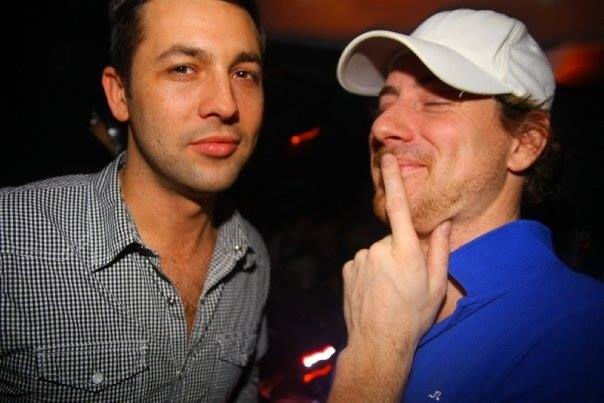
Joel (left) and Steph, then of Footwork and now of CODA. Photo by John Mitchell (http://derinkuyu.ca/).
CODA opened Jan. 18 with Art Department, and has featured impressive bookings each following week. Attendance has been high, and the reception positive.
With a capacity double that of Footwork, a stage that allows for live shows, and a new floor that adds some bounce for dancing bodies, CODA has the bases covered. Smye tells me they plan to program a variety of sounds, with live shows during the week and electronic music on weekends. Former Wreckroom head honcho Mark Atkinson was also hired as CODA’s General Manager.
Upcoming CODA events include Sydney Blu this Friday (Feb. 14), Yes Yes Y’all’s fifth anniversary (Feb. 21), Soul Clap (Feb. 22), beatboxer Beardyman (Feb. 27), and a Stones Throw special featuring Peanut Butter Wolf and JRocc (March 6).
No matter the music, it will be heard through a high-calibre soundsystems built and installed by PK Sound. Owner Paul Magnuson counts himself as a fan of Footwork.
“If you were to compare the two clubs, the major difference [in sound] would be power,” says Magnuson. “You’ll feel the system like never before, adding to the already intense experience Footwork provided. I really couldn’t compare this system to any other in North America; it’s very unique, even for us. The use of our large format line, and the placement of strategic delays, allows for a concert-like experience in a small room. Anyone attending events at CODA can expect to hear the music as it was intended by the composer or producer, with the all the power, depth, and clarity offered by modern acoustic technology. We’ve been really excited to unleash this system in Toronto, especially at CODA. Steph and Joel are incredibly passionate guys, and care about the people, the music, and the community. They’ve created something truly special.”
Adds Gleeson, “CODA is much bigger, and it might be difficult to retain that same intimate feel that Footwork had, but considering the structural changes they’ve made inside, I think it will be a big improvement.” (Gleeson continues on as a resident there, and recently released Your Love, a collaborative EP recorded with local funky-house duo Speedboats & Big Explosions.)
“It’s always sad to see a place this close to your heart close its doors, but everything does come to an end,” reasons Lio, who soon has releases coming out on Carl Cox’s Intec and Loco Dice’s Desolat in addition to remixing Audion for Spectral Sound.
“I am super happy for Steph and Joel, and the success of Footwork,” Lio adds. “They left on a high note, and I’m happy they didn’t skip a beat because we all know they have so much more to contribute to the Toronto underground. They are vital to this scene.”
The former Footwork space at 425 Adelaide St. W. will soon reopen as The Ace Lounge. Owner Jack (no last name provided) did not care to confirm any further details.
Addendum: inspired by this Then & Now story of Footwork, Toronto DJ Jeff Button and his DigDeep project compiled all of the live sets recorded at the club that they could find on Soundcloud. Enjoy many hours of listening below.
Thank you to participants Addy Ranh, Alex Mastro, Carlo Lio, Joel Smye, Jonathan Rosa, Kellie Nelles, Michael ‘Deko-ze’ Babb, Mike Gleeson, Paul Magnuson, Stephan Philion, and to John Mitchell, Sasha Niveole and Jeff Button.

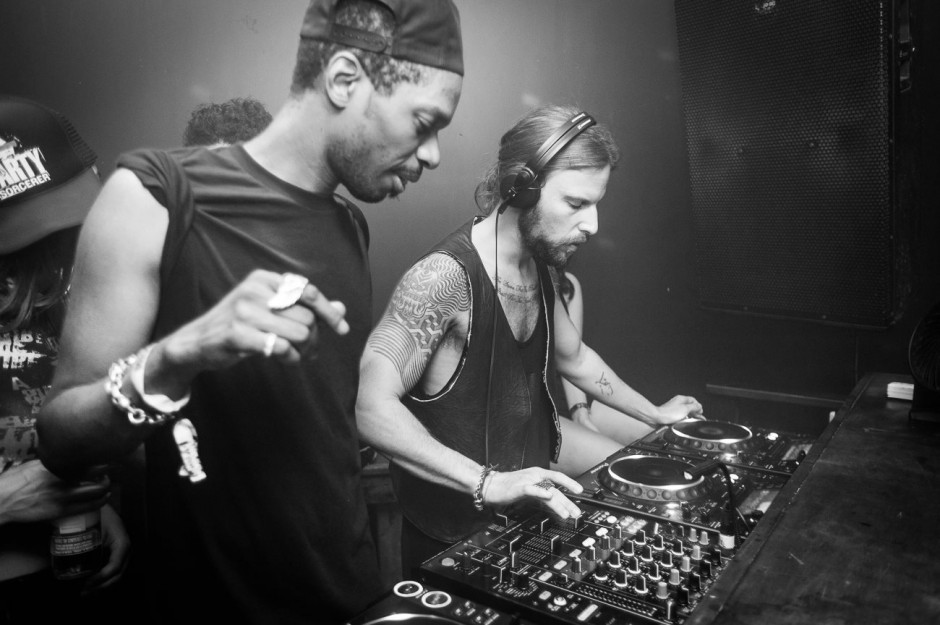
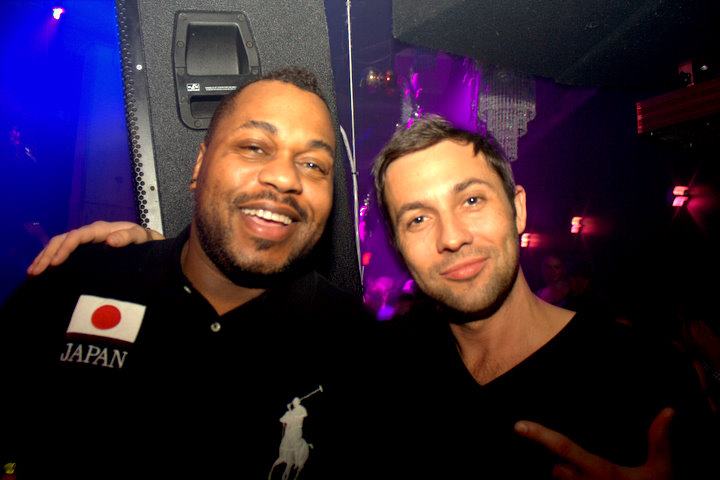
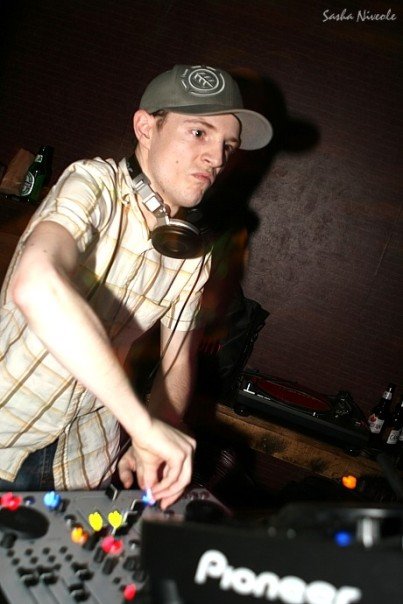
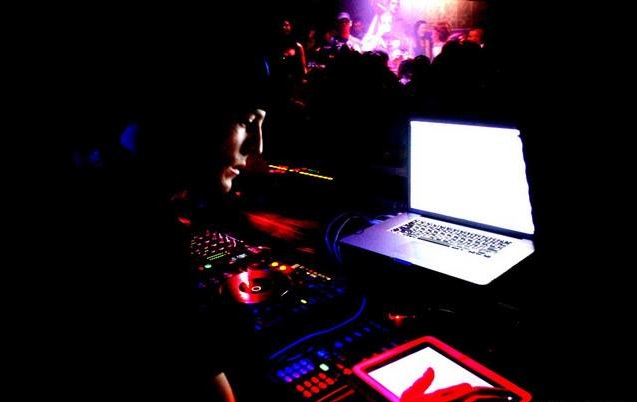
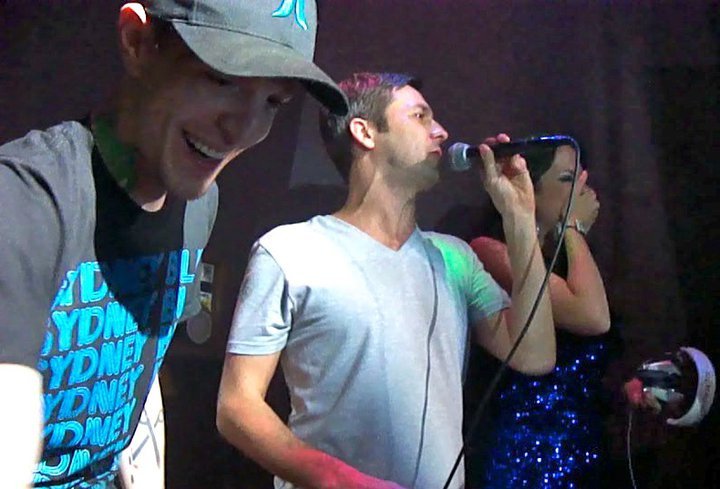
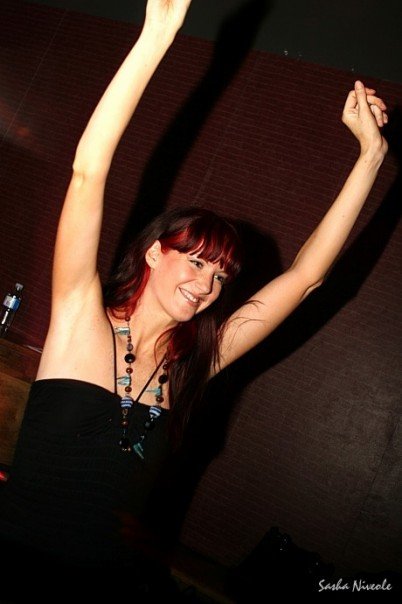
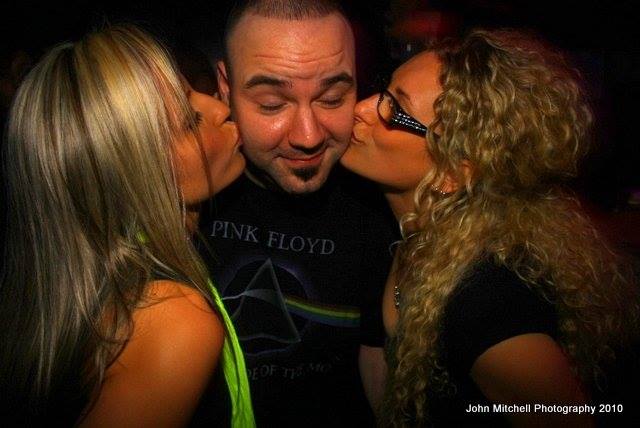
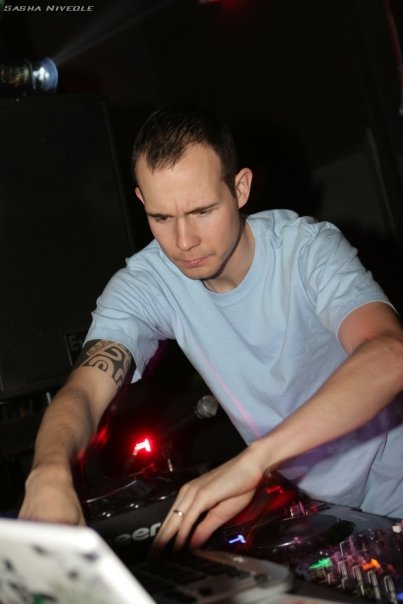
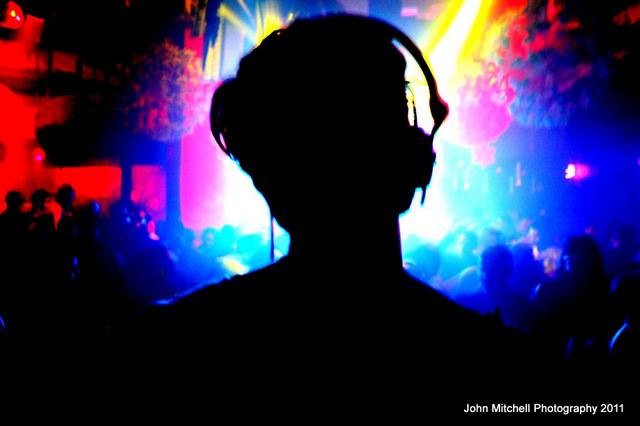
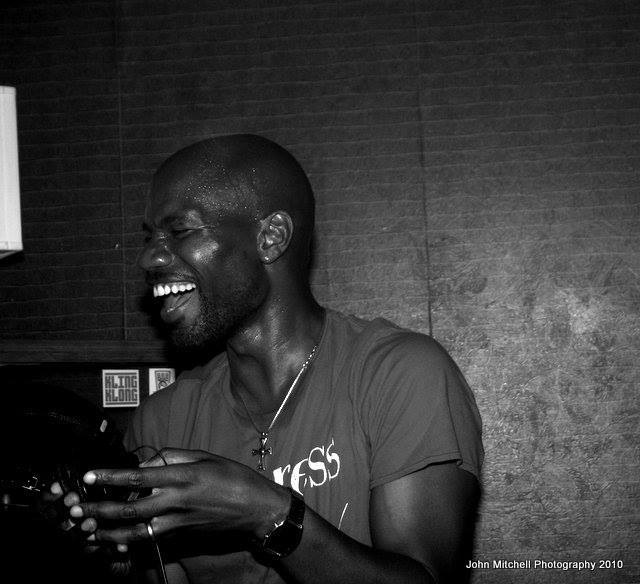

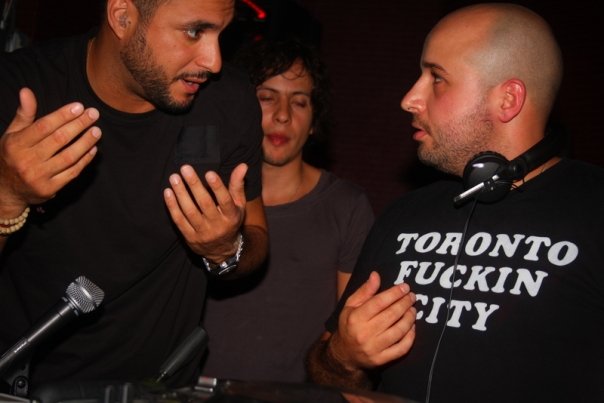
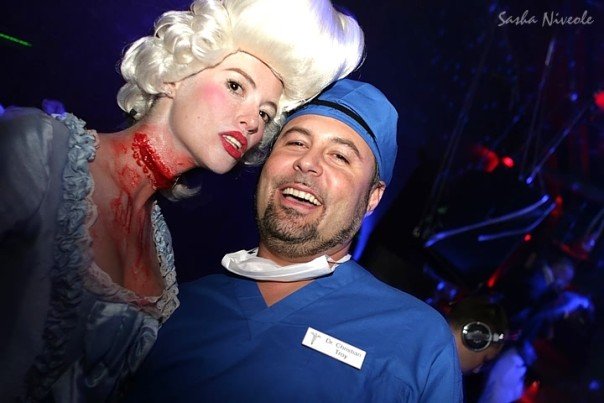
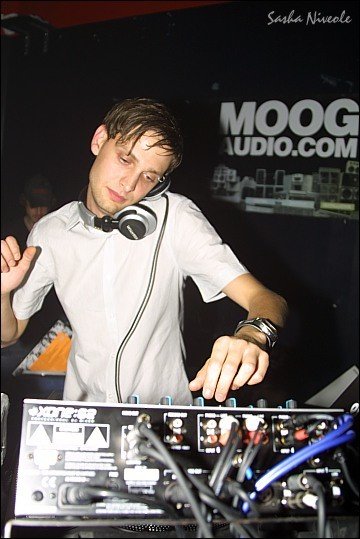
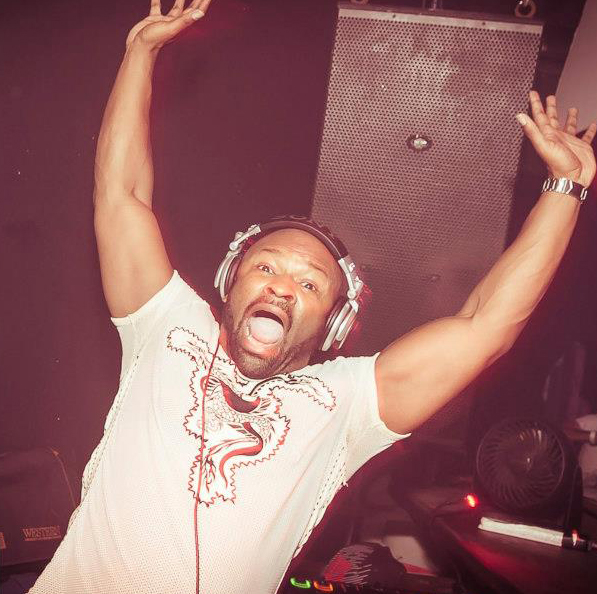
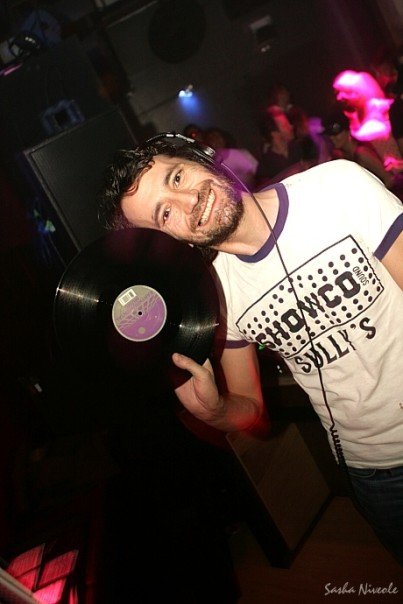
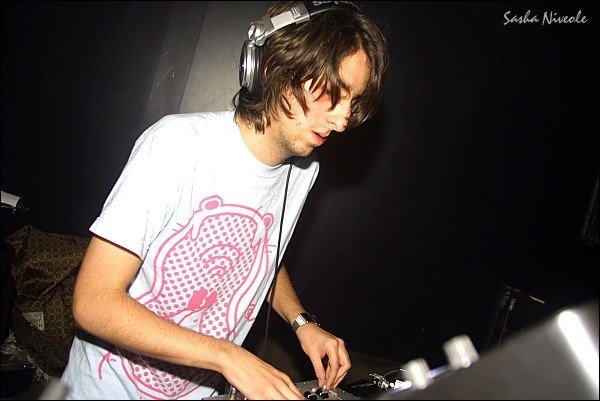
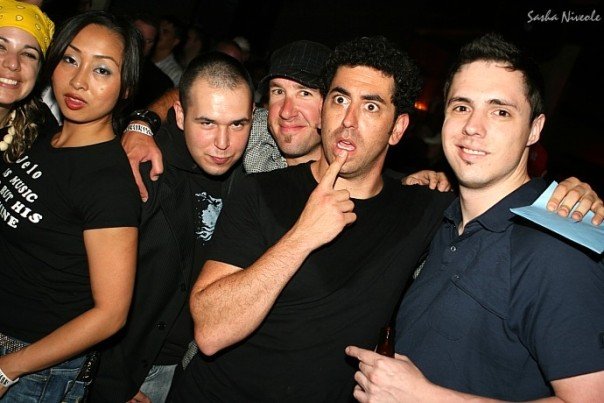
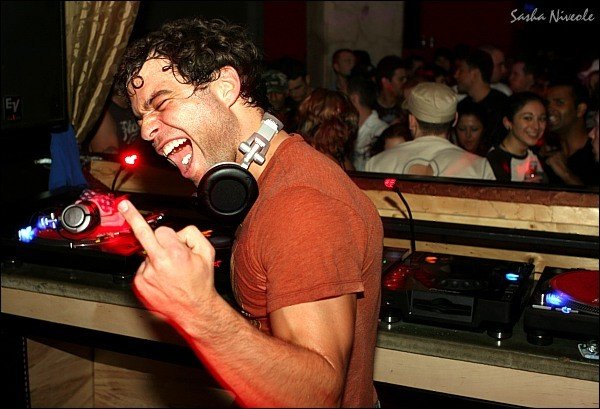
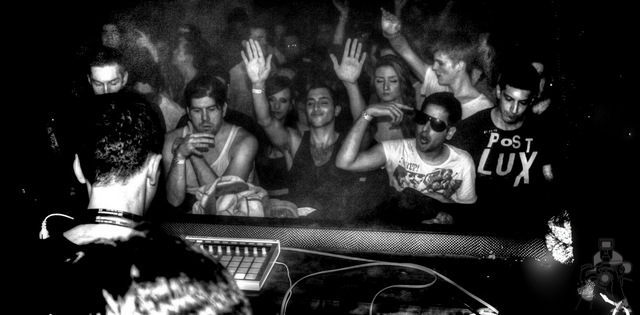
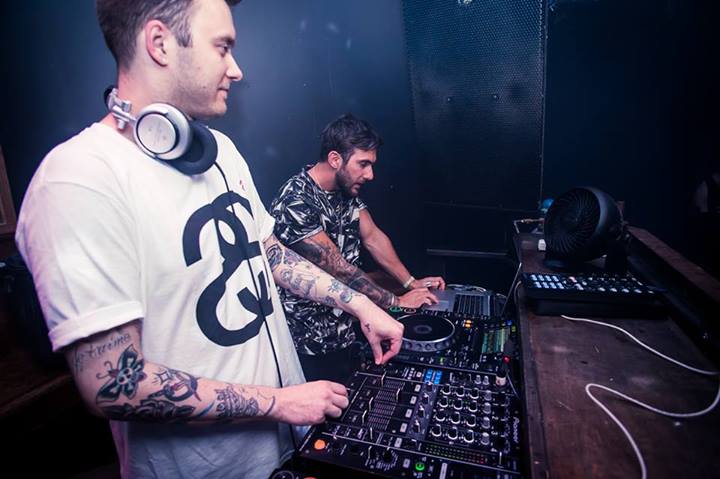
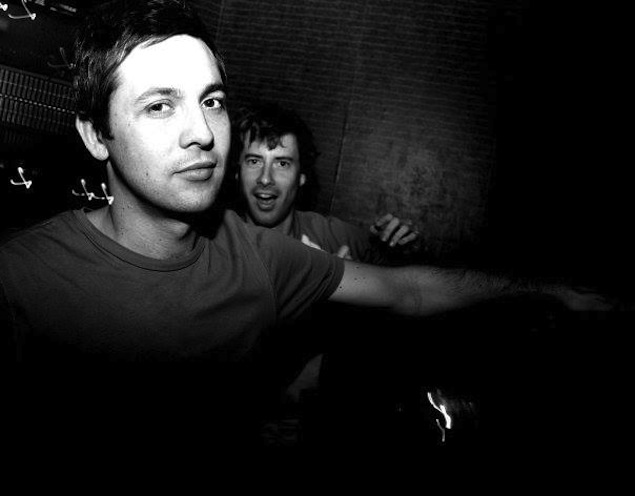

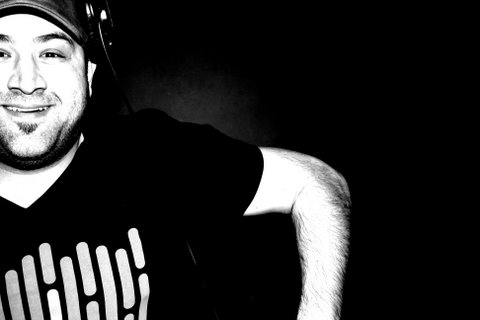
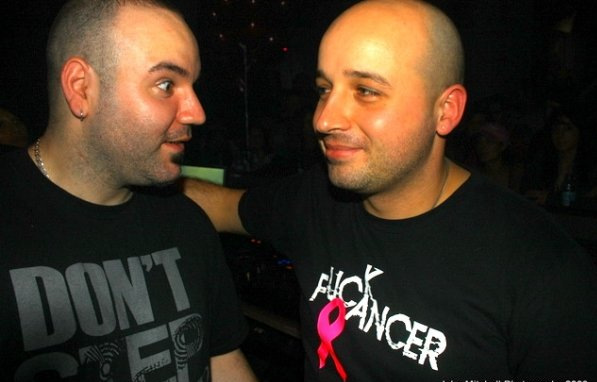
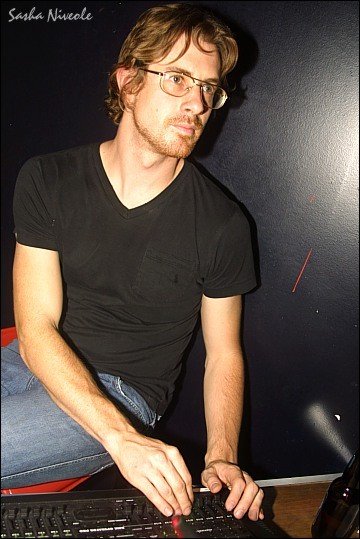
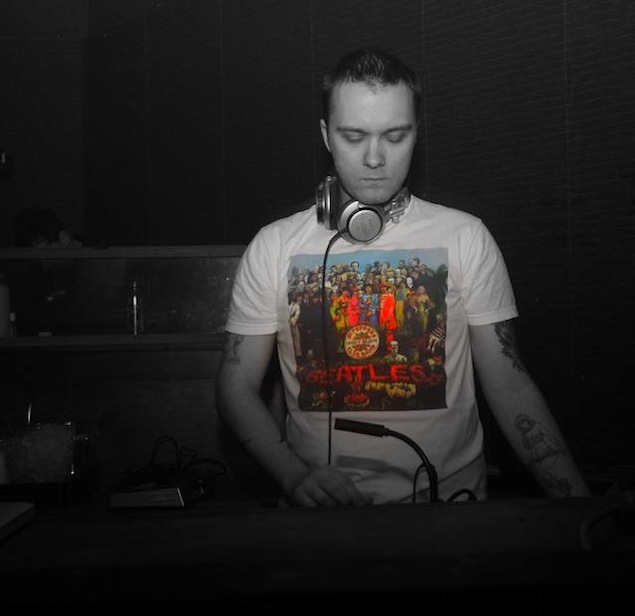
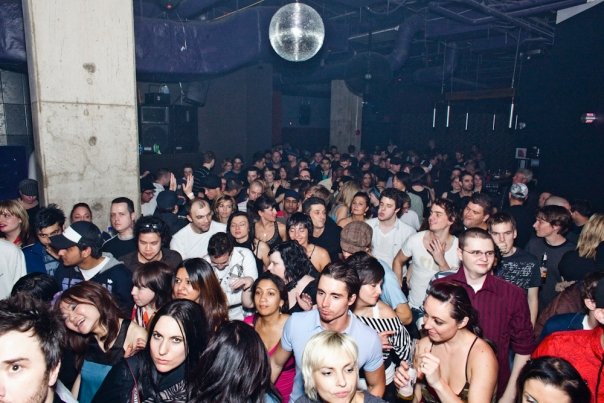
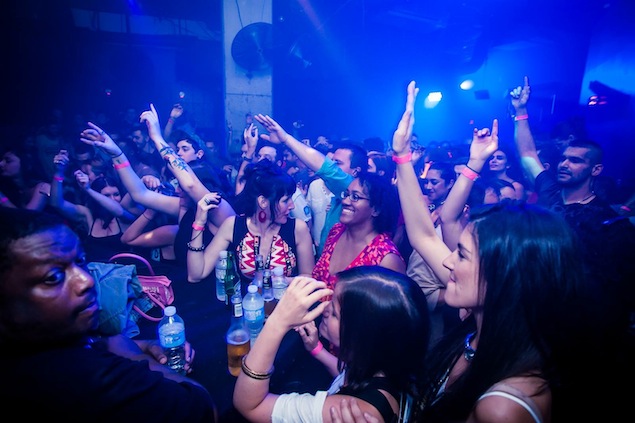
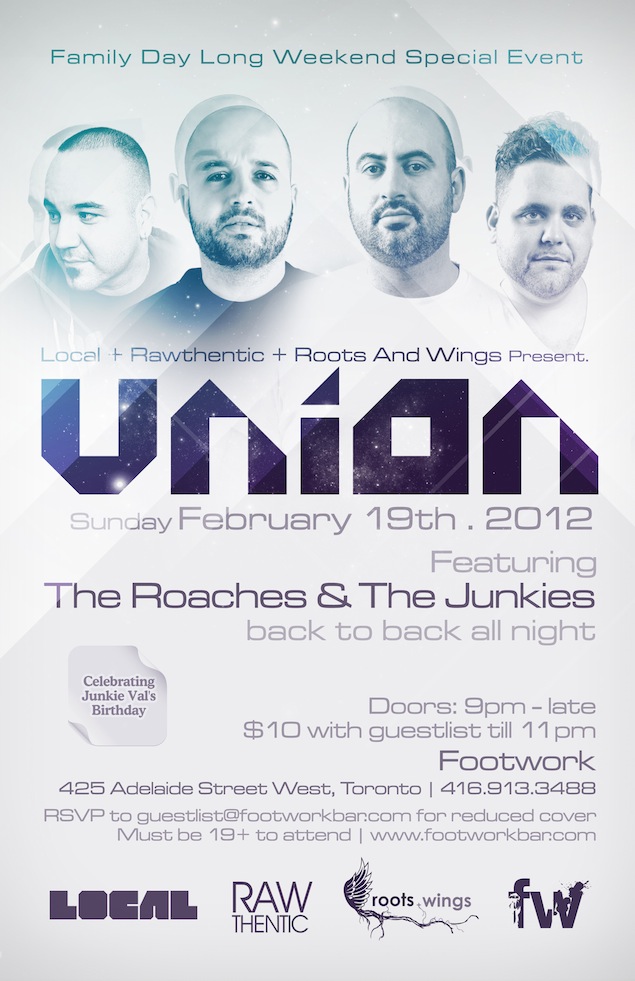
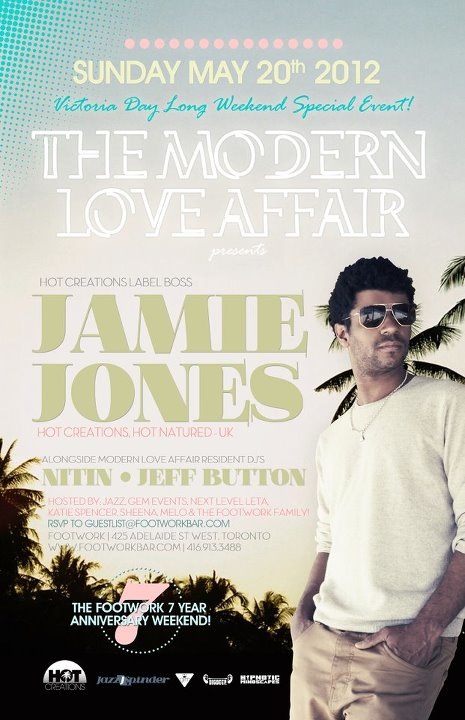
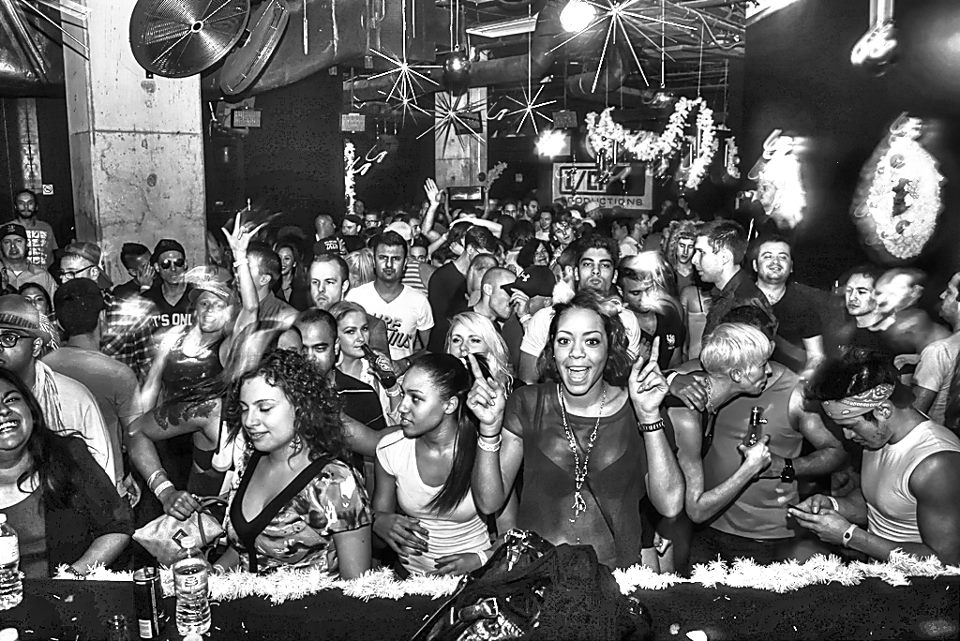
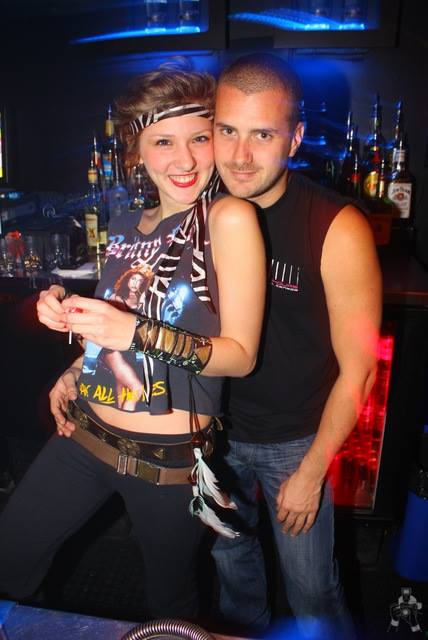
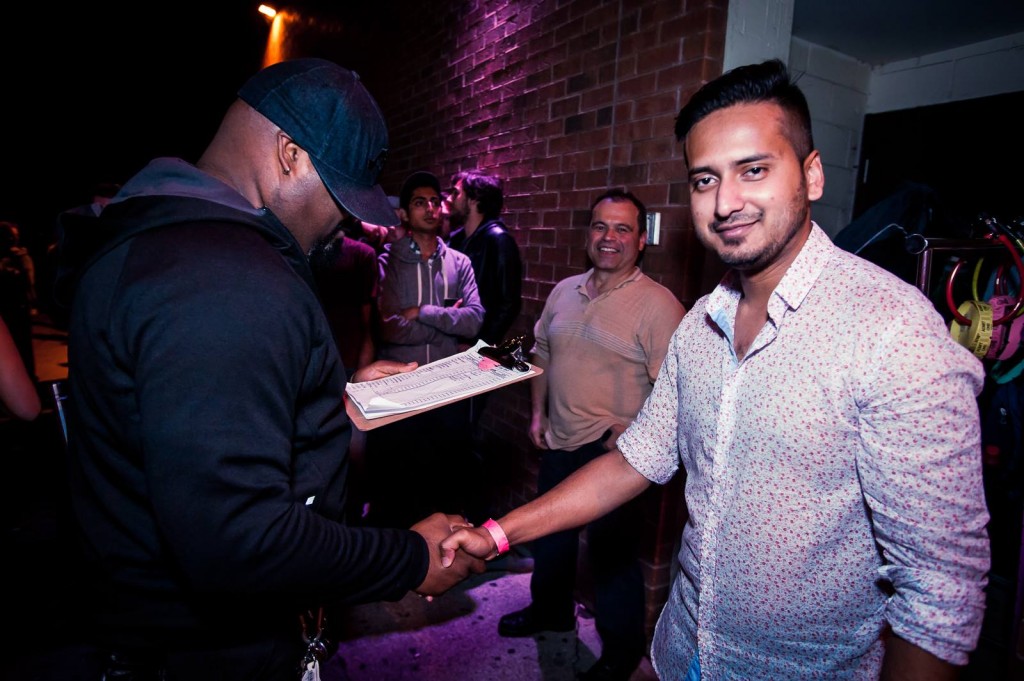
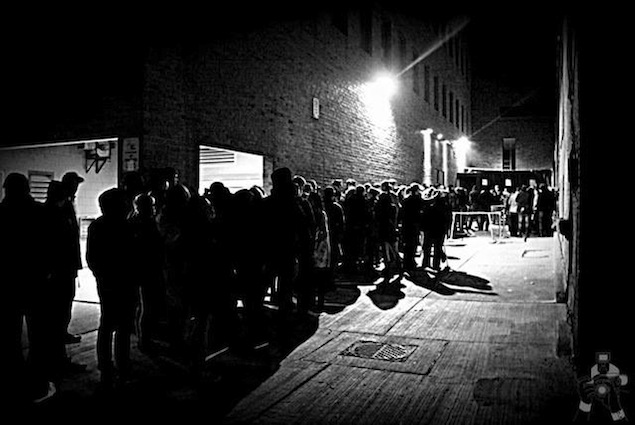
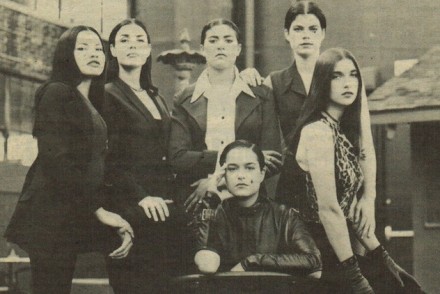
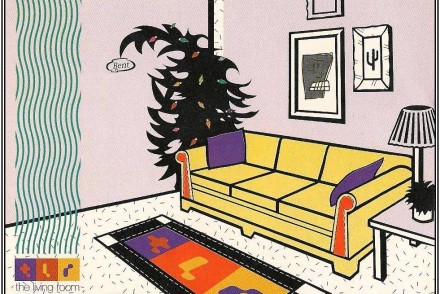
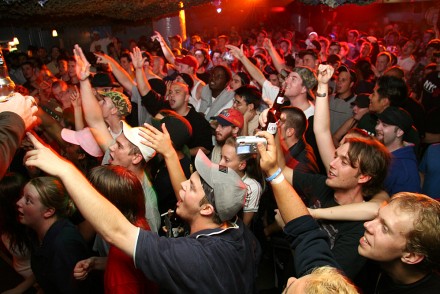

2 Comments
Footwork was tons of fun. It was the first club I ever went to. Between 2006-2008 I went probably twice a month. Maybe I’m mis-remembering, but I used to go see Fred Everything there, and I’m pretty sure he had a quarterly (?) residency. I remember hearing so many deep/tech bangers that I still love to this day. The barstaff was always so friendly. I forget her name, but one of the bartenders always remembered my order each week. At one point I didn’t go for probably two years, and went one night and the bathroom attendant remembered me from ages back! Always great vibes; I was sad to hear it closed. But I’m glad they’re doing well in the form of Coda.
All comments in the string below have been republished from their original appearance on The Grid website. We’re including the readers’ comments as they add to these Then & Now stories. We look forward to reading new comments here as well.
KK
Very well written article that, Im sure, will take many people back on a journey.
I’d completely forgotten about night’s like Switch at Fw, or the Rene Amesz night where they played sounds that were ahead of the game. (As i write this, I remember Anthony Middleton playing ‘Larry Heard – Deja Vu (Musaria Vocal Mix)’ only moments after playing Solid Groove – This is Sick.)
As was often the case, the atmosphere at FW was intoxicating in itself, and the music took you left, right and centre.
This article consistently reiterated the spirit of the club in such a great way: the music and atmosphere’s reciprocal contribution to the relationship of the DJ and partygoers with one another. Unity inclusive of music.
At the end of the day, that’s what it was all about, and I am sure I speak for many by saying we had many incredible times at this (often described it people ‘not in the know’ as a) hidden gem.
As the article highlighted, Footwork was the ‘go to’ for it’s crowd who ‘knew their music’. What it did so well at setting itself apart was it’s ability to seduce patrons and DJs to attend in hopes of being taken on a journey where new, unheard sounds and new vibes would be demonstrated and experienced… This concept distinguishes itself drastically from what mainstream clubs offered. Mainstream was and still is largely about playing the anthems that people know and can sing and dance along to. Footwork was the pioneer in musical education and, as the article mentioned, the ‘venue to get lost in the atmosphere of the music’.
They set the precedent, had great team players who supported their common goal, were pivotal in Toronto’s underground music culture’s growth, and the memories from their past will comfort many as they continue to move forward.
Best.
K 5:46 pm on February 11, 2014